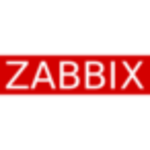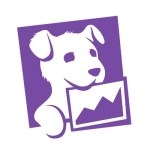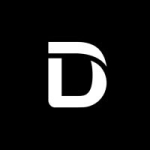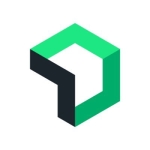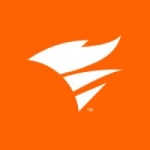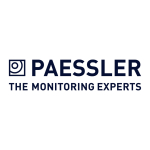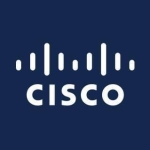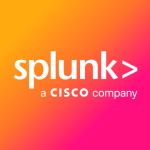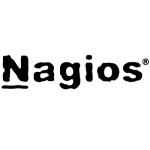What is our primary use case?
Our company develops its own software solutions and prioritizes user safety, particularly in Europe, where we focus on compliance and education regarding student protection online. This includes content like radicalization, drug exposure, and self-harm. To ensure our own SaaS-based service, offered in both Europe and the US, functions optimally, we utilize Auvik for infrastructure monitoring.
A major challenge has been keeping our on-call teams engaged. Previously, our lack of automation meant that someone had to wake up in the middle of the night to check tickets and logs, ensuring everything was running smoothly. However, Auvik's automation and reporting features have transformed our process. Now, we only get woken up proactively when something actually goes wrong, thanks to Auvik leveraging other tools in conjunction with its own functionalities. This has significantly improved our on-call experience.
Our network management solution, Auvik, is deployed across a hybrid cloud environment. We utilize a mix of cloud providers, including AWS in the UK and Canada, DigitalOcean in the UK, Amsterdam, Germany, France, India, Singapore, San Francisco, Virginia, and Toronto, and four of our own data centers located in the UK, North America, and Amsterdam.
How has it helped my organization?
Real-time network visibility was a key factor in choosing Auvik, made possible by its helpful network mapping. While we previously relied on other, more cumbersome software, Auvik's ease of use is a game-changer. Onboarding new employees takes just 20 minutes thanks to the intuitive interface. In contrast, our prior system required countless documents for even basic tasks like adding or removing a host or checking resource utilization. Thankfully, Auvik's intuitive design streamlines these processes.
Since implementing Auvik in April, we've only had one incident, which Auvik fortunately caught in real-time. We received notification within 40 seconds of the event, allowing us to swiftly address it. As the COO responsible for service delivery, I'm impressed. Previously, such issues might have gone unnoticed until the morning. Thankfully, with Auvik, we were up and running within five minutes, and full resolution followed shortly after. In essence, Auvik helped us reduce a potential outage from several hours to a mere 20 minutes.
We anticipated the benefits of Auvik upon deployment, and these expectations were confirmed two weeks later when we encountered an incident that was swiftly addressed.
Auvik has helped reduce our mean time to resolution from a few hours to a few minutes.
Auvik streamlines our network management by automating tasks like agent deployment and configuration. With SNMP enabled on new servers, Auvik automatically discovers them and adds them to the correct network map, saving us significant time compared to manual setup and troubleshooting.
The time savings are resulting in more time being dedicated to other tasks.
What is most valuable?
The way Auvik allows us to manage our infrastructure provides a top-level view of everything, solving several past issues. This includes streamlining on-call duties and maintaining an accurate asset inventory. Our deployment consists of one main site with 46 smaller sites, each running various cloud and production services. These can be managed individually, or we can leverage the top-level view for overall control, saving us time and money in the long run using Auvik.
What needs improvement?
While Auvik excels at out-of-the-box SNMP monitoring, a major selling point, maintaining services over time often requires custom development to ensure they function and transmit data properly. Ideally, Auvik could integrate the results from these custom applications and scripts directly, streamlining the monitoring process.
Auvik delivers on its core functionalities as advertised, with a smooth deployment and execution process. While the asset management features are helpful for basic network inventory, increased customization for data presentation would be beneficial. This could include integrating custom application results or incorporating data from our own monitoring scripts. It's important to remember that asset management isn't a core function of Auvik, but rather a bonus feature. While additional customization would be a welcome improvement, it's not a core expectation of the software.
For how long have I used the solution?
I have been using Auvik Network Management for two months.
What do I think about the stability of the solution?
Auvik Network Management has been stable with no hiccups.
What do I think about the scalability of the solution?
Auvik is handling our network workload well and shows no signs of scalability issues. Of course, we'll need to monitor performance as we grow and add more hardware, but for now, things are running smoothly.
How are customer service and support?
My experience with their customer success team has been fantastic. They've even included technical support for review purposes during our calls.
How would you rate customer service and support?
Which solution did I use previously and why did I switch?
We previously relied on a number of custom monitoring tools, including Nagios for system uptime and network capacity, and MRTG for generating graphs. These have all been replaced by Auvik, which provides these functionalities out of the box. We've also done away with internal alert triggers and manual asset lists, and now rely solely on Auvik in conjunction with PagerDuty for notifications and asset management, respectively. This has eliminated the need for maintaining separate spreadsheets and manual processes.
While Nagios is powerful, it demands significant effort and customization. In contrast, Auvik provides essential, out-of-the-box monitoring tools necessary to maintain network uptime. This ease of use allowed us to deploy it across 46 sites in under two hours.
How was the initial setup?
The Auvik deployment started during the trial phase with a collector installed on a few test networks. After successful evaluation, transitioning to full production involved a simple firewall rule change and a one-page document outlining the rollout process, including a maintenance window and proper site naming. Since launch, the team has been fine-tuning the pre-configured alerts to minimize noise and ensure they only trigger when necessary.
One resource was required for the deployment.
What about the implementation team?
Our team handled the deployment process ourselves, and Auvik's customer success team provided us with direct feedback throughout the process.
What was our ROI?
While traditional ROI might not apply since I don't resell Auvik, the return we're seeing is in engineer productivity. Auvik automates monitoring tasks, freeing them up for other projects. It's still early – only a month and a half – but so far it's been fantastic. We're tracking how much time is saved, and if this trend continues, Auvik will be a major success for our team.
What's my experience with pricing, setup cost, and licensing?
Among the products considered, Auvik stood out for its competitive pricing. While Datadog was considerably more expensive, Auvik offered features and pricing similar to NetData. The Auvik team's customer success and account management teams impressed us with their ability to secure discounts and other incentives, making the deal even more attractive.
Our monitoring covers a large number of devices, well over 150 in total. While our billing reflects around 40 devices, most of these are Linux servers which are included in our monitoring package. This includes virtual machines where the servers reside, and we receive alerts for any issues like disk space, CPU usage, memory problems, or backup failures.
Which other solutions did I evaluate?
In our evaluation of several monitoring options, we considered Datadog for application monitoring, the new version of Nagios, and NetData for network monitoring. We also explored a few other possibilities. Ultimately, Datadog, Auvik, and NetData emerged as the frontrunners, undergoing extensive testing and trials to determine if they met our requirements.
While ease of deployment was a key factor in choosing Auvik, it wasn't the only one. As a Canadian company, Auvik did hold a certain patriotic appeal, but ultimately, it came down to features and price. Datadog and NetData were significantly more expensive for a production environment. We ruled out Nagios because migrating our existing setup wasn't feasible, meaning a complete rebuild. Thankfully, Auvik's deployment took less than two hours.
What other advice do I have?
I would rate Auvik Network Management ten out of ten.
Auvik has been a key tool for simplifying our platform monitoring. Its intuitive user interface allows for easy navigation between instances, minimizing training time for junior staff. We've reduced onboarding sessions from multiple sessions to just a half hour, making it significantly easier for our new technicians to get up to speed.
One of the key reasons we chose Auvik was because of its minimal maintenance requirements, which is perfect for our small team. Since it's cloud-hosted, the collectors automatically upgrade themselves, so we don't need to worry about keeping up with updates or ensuring we're on the latest version – that's all handled by Auvik.
In my experience, Auvik stands out for its ease of use, especially during the trial period. Setting up trials in custom environments can be difficult, but Auvik's worked flawlessly. Their support was readily available, and their pricing was competitive with good value. Overall, it's a top choice for managing IT infrastructure.
Which deployment model are you using for this solution?
Public Cloud
If public cloud, private cloud, or hybrid cloud, which cloud provider do you use?
Amazon Web Services (AWS)
Disclosure: PeerSpot contacted the reviewer to collect the review and to validate authenticity. The reviewer was referred by the vendor, but the review is not subject to editing or approval by the vendor.








